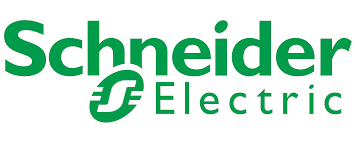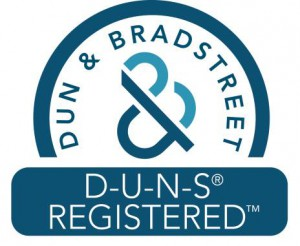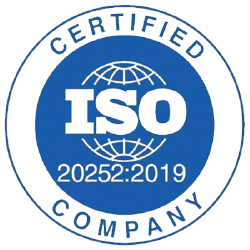Pagina aggiornata :
Jul 2025
INTRODUZIONE AL MERCATO Il latte di capra in polvere contiene nutrienti A, D, acido folico, aminoacidi, grassi, zucchero, sodio, colesterolo, calcio, proteine e altre sostanze salutari. Il latte di capra in polvere viene dopo l'evaporazione e l'essiccazione a spruzzo di tutto il latte di capra. Tutta la crema di latte caprino viene prima scremata e poi essiccata. Sia il latte intero che quello scremato in polvere di capra vengono utilizzati nelle formule per neonati, nella preparazione di yogurt e cheddar, nei piatti a base di cioccolato, nella dieta sportiva, nella dieta dimagrante per anziani e nel frozen yogurt. DINAMICHE DEL MERCATO L'uso del latte di capra in polvere nei neonati è aumentato grazie ai suoi benefici nutrizionali. Il latte di capra in polvere potrebbe non essere una scelta per il latte materno, ma le proteine contenute nel latte di capra in polvere lo rendono il miglior sostituto del latte materno umano. Il latte di capra contiene caseina A2, che si trova anche nel latte materno, e aiuta a garantire che il latte venga facilmente assorbito dal bambino. È anche un buon sostituto del latte vaccino perché il latte degli animali da latte contiene caseina A1, che causa problemi irritanti ed è ipersensibile se somministrata ai neonati, il che può causare al bambino gli effetti negativi di stomaco compresso e diarrea. Inoltre, i globuli di grasso contenuti nel latte di capra in polvere hanno una larghezza notevolmente ridotta, con conseguente più facile ritenzione. Il maggiore benessere degli acquirenti e l’adozione di uno stile di vita solido continuano a guidare lo sviluppo del latte in polvere di capra. Man mano che le persone si concentrano maggiormente su una buona dieta, stanno passando dal latte di bovini da latte al latte di capra. Questa tendenza verso la preferenza dei consumatori ha portato anche a un maggiore utilizzo di integratori alimentari a base di latte di capra in polvere. AMBITO DI MERCATO L'"Analisi del mercato globale del latte di capra in polvere fino al 2031" è uno studio specializzato e approfondito dell'industria alimentare e delle bevande con particolare attenzione all'analisi delle tendenze del mercato globale. L’obiettivo del rapporto è fornire una panoramica del mercato Latte in polvere di capra con una segmentazione completa del mercato per tipo di prodotto, applicazione e area geografica. Si prevede che il mercato globale Latte in polvere di capra assisterà a una crescita elevata durante il periodo di previsione. Il rapporto fornisce statistiche chiave sullo stato del mercato dei principali attori del mercato Latte in polvere di capra e offre tendenze e opportunità chiave nel mercato. SEGMENTAZIONE DEL MERCATO Il mercato globale del latte in polvere di capra è segmentato in base al tipo di prodotto e all'applicazione. Il mercato è segmentato in latte scremato in polvere di capra e latte intero in polvere di capra in base alla tipologia di prodotto. In base all’applicazione, il mercato del latte in polvere di capra è segmentato in alimenti e bevande, prodotti farmaceutici, cosmetici e altri. QUADRO REGIONALE Il rapporto fornisce una panoramica dettagliata del settore, comprese informazioni qualitative e quantitative. Fornisce una panoramica e previsioni del mercato globale del latte in polvere di capra in base a vari segmenti. Fornisce inoltre stime sulle dimensioni del mercato e sulle previsioni per gli anni dal 2021 al 2031 rispetto a cinque regioni principali, ovvero: Nord America, Europa, Asia Pacifico (APAC), Medio Oriente e Africa (MEA) e Sud America. Il mercato Latte in polvere di capra per regione viene successivamente suddiviso in paesi e segmenti. Il rapporto copre l’analisi e le previsioni di 18 paesi in tutto il mondo insieme alla tendenza attuale e alle opportunità prevalenti nella regione. Il rapporto analizza i fattori che influenzano il mercato del latte di capra in polvere sia dal lato della domanda che dell’offerta e valuta ulteriormente le dinamiche di mercato che influenzano il mercato durante il periodo di previsione, vale a dire fattori trainanti, restrizioni, opportunità e tendenze future. Il rapporto fornisce anche un’analisi completa dei parassiti per tutte e cinque le regioni, vale a dire: Nord America, Europa, APAC, MEA e Sud America, dopo aver valutato i fattori politici, economici, sociali e tecnologici che influenzano il mercato del latte in polvere di capra in queste regioni. ATTORI DI MERCATO I rapporti coprono gli sviluppi chiave nel mercato del latte in polvere di capra, nonché le strategie di crescita organica e inorganica. Diverse aziende si concentrano su strategie di crescita organica come lanci di prodotti, approvazioni di prodotti e altri come brevetti ed eventi. Le strategie di crescita inorganica osservate nel mercato includevano acquisizioni, partnership e collaborazioni. Queste attività hanno aperto la strada all'espansione del business e della base di clienti degli operatori di mercato. A causa della crescente domanda di latte in polvere di capra nel mercato globale, si prevede che gli operatori del mercato del latte in polvere di capra avranno opportunità di crescita redditizie in futuro. Di seguito è riportato un elenco di alcune delle aziende che operano nel mercato del latte in polvere di capra. Il rapporto include anche i profili delle principali aziende insieme alle loro analisi SWOT e strategie di mercato nel mercato Latte Di Capra In Polvere. Inoltre, il rapporto si concentra sui principali attori del settore con informazioni quali profili aziendali, componenti e servizi offerti, informazioni finanziarie negli ultimi tre anni e sviluppi chiave negli ultimi cinque anni.
- • Ausnutria Dairy Corporation Ltd • CBM • Caseificio del Castello • DGC • Difendi Sdn Bhd • Cibo Alpha Delta • Roba da caprone • The Good Goat Milk Company • Keytone Dairy Corporation Limited • Il team dedicato di ricerca e analisi di CapriLac
- Analisi storica (2 anni), anno base, previsione (7 anni) con CAGR
- Analisi PEST e SWOT
- Valore/volume delle dimensioni del mercato - Globale, Regionale, Nazionale
- Industria e panorama competitivo
- Set di dati Excel
Report recenti
Rapporti correlati
Mercato del latticello in polvere
Mercato del latte fermentato
Mercato del grasso del latte concentrato
Mercato del latte in polvere per neonati
Mercato del latte evaporato
Mercato del latte al cioccolato
Mercato dei sostituti del latte liquido
Mercato del latte di cocco e derivati
Mercato del latte senza lattosio
Mercato del latte di animali nutriti con erba
Mercato del latte di cocco
Mercato dei prodotti a base di latte di capra
Mercato del latte condensato
Mercato del latte di capra in polvere
Segui il mercato del latte artificiale
Mercato del latte d'asina
Mercato dei prodotti a base di latte di cammello
Mercato del latte evaporato riempito
Mercato degli oligosaccaridi del latte umano
Mercato del latte in polvere ricco di grassi
Testimonianze
Motivo dell'acquisto
- Processo decisionale informato
- Comprensione delle dinamiche di mercato
- Analisi competitiva
- Analisi dei clienti
- Previsioni di mercato
- Mitigazione del rischio
- Pianificazione strategica
- Giustificazione degli investimenti
- Identificazione dei mercati emergenti
- Miglioramento delle strategie di marketing
- Aumento dell'efficienza operativa
- Allineamento alle tendenze normative
I nostri clienti






























Assistenza vendite
US: +1-646-491-9876
UK: +44-20-8125-4005
Email: sales@theinsightpartners.com
Chatta con noi

87-673-9708

ISO 9001:2015



 Ottieni un campione gratuito per - Mercato del latte di capra in polvere
Ottieni un campione gratuito per - Mercato del latte di capra in polvere